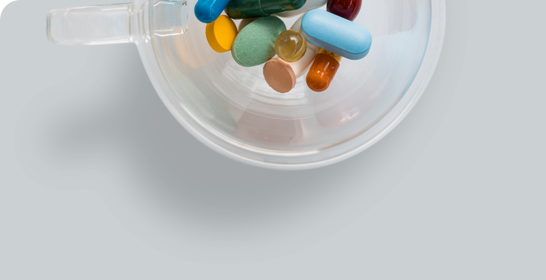We use cookies to make your experience better. To comply with the new e-Privacy directive, we need to ask for your consent to set the cookies. Learn more.
GINXREAL G4 - Panax ginseng root 4% ginsenosides [UV] Rb1>0.5%, Rg1>0.3% [HPLC] powder extract
Synonym(s):
- GINXREAL; Panax ginseng root; ginsenosides
- CAS Number: 50647-08-0 [generic]
GINXREAL G4 - Panax ginseng root 4% ginsenosides [UV] Rb1>0.5%, Rg1>0.3% [HPLC] powder extract
Key Facts
- GINXREAL is a range of premium quality standardised Panax ginseng root extract, carefully selected at 6 to 8 years old.
- GINXREAL does not contain any other parts of the plant except the root and is produced to the highest specification.
Background
GINXREAL is obtained from carefully selected ginseng plants, scientifically known as Panax Ginseng. Panax Ginseng belongs to the Araliaceae family and has historically been used in Traditional Asian Medicine for a wide range of preventative purposes.The Panax ginseng roots are inspected and tested thoroughly prior to washing and peeling for quality control purposes. The washed roots are crushed and subsequently extracted using water or ethanol to extract the actives of ginseng. These water or ethanol soluble extracts are centrifuged and subsequently spray dried or freeze dried to obtain the high quality ginseng root powder extract that is in GINXREAL.
Almost all health, medicinal, therapeutic and physiological benefits of ginseng root extracts are due to the presence of ginsenosides. These health benefits include enhancing physical performance, the immune system, as well as acting as an antioxidant and neuroprotective among other benefits which are outlined in greater detail below.
At Present we have the following variants of GINXREAL
GINXREAL G4- Panax ginseng root 4% ginsenosides [UV] Rb1>0.5%, Rg1>0.3% [HPLC] powder extractGINXREAL G6- Panax ginseng root 6% ginsenosides [UV] Rb1>0.7%, Rg1>0.3% [HPLC] powder extract
GINXREAL G7- Panax ginseng root 7% ginsenosides [UV] Rb1>0.9%, Rg1>0.5% [HPLC] powder extract
Chemistry
The chemical constituents of ginseng includes terpene saponins, polysaccharides, peptidoglycans, nitrogen-containing compounds, essential fatty acids, bioactive carbohydrates and phenolic compounds. The recognised primary biologically active components of ginseng root extracts are a group of 30 different triterpene saponins, also known as ginsenosides (triterpene β-glycoside). Ginsenoside content and composition varies depending on the species of ginseng, harvesting time, processing and extraction techniques. Ginsenoside Rb 1 is of the Protopanaxadiol class while Ginsenoside Rg 1 is of the Protopanaxatriol class which contains an additional hydroxyl group on C6. The ginsenoside content of GINXREAL is always standardised.Brief Identification of Ginsenosides present in GINXREAL
Ginsenoside Rb 1
CAS – 41753-43-9
Molecular Formula – C54H92O23
Molecular Weight – 1109.3 g/mol
IUPAC – (2R,3R,4S,5S,6R)-2-[[(2R,3S,4S,5R,6S)-6-[(2S)-2-[(3S,5R,8R,9R,10R,12R,13R,14R,17S)-3-[(2R,3R,4S,5S,6R)-4,5-dihydroxy-6-(hydroxymethyl)-3-[(2S,3R,4S,5S,6R)-3,4,5-trihydroxy-6-(hydroxymethyl)oxan-2-yl]oxyoxan-2-yl]oxy-12-hydroxy-4,4,8,10,14-pentamethyl-2,3,5,6,7,9,11,12,13,15,16,17-dodecahydro-1H-cyclopenta[a]phenanthren-17-yl]-6-methylhept-5-en-2-yl]oxy-3,4,5-trihydroxyoxan-2-yl]methoxy]-6-(hydroxymethyl)oxane-3,4,5-triol
Ginsenoside Rg 1
CAS – 22427-39-0
Molecular Formula – C42H72O14
Molecular Weight – 801.0 g/mol
IUPAC – (2R,3R,4S,5S,6R)-2-[[(3S,5R,6S,8R,9R,10R,12R,13R,14R,17S)-3,12-dihydroxy-4,4,8,10,14-pentamethyl-17-[(2S)-6-methyl-2-[(2S,3R,4S,5S,6R)-3,4,5-trihydroxy-6-(hydroxymethyl)oxan-2-yl]oxyhept-5-en-2-yl]-2,3,5,6,7,9,11,12,13,15,16,17-dodecahydro-1H-cyclopenta[a]phenanthren-6-yl]oxy]-6-(hydroxymethyl)oxane-3,4,5-triol
Health benefits
GINXREAL is a qualitatively and quantitatively standardised root extract of ginseng, having various physiological, psychological, neurological and pharmacological benefits. Ginseng root extracts have been used in traditional Asian medicine for more than 5000 years as a tonic for increasing the body’s resistance to stress and fatigue, to increase endurance under heavy physical activity, and to improve well-being during aging. Various clinical and research studies have reported the wide spectrum beneficial effects of ginseng-based products on central nervous system and immune function. Recent studies have also highlighted a range of important pharmacological consequences of ginseng including antioxidant, anti-cancerous and anti-diabetic effects.
Sports nutrition/ Physical performance
Ginseng containing supplements are claimed to increase energy levels and improved motor skills in fatigued subjects (Cao et al., 2012; Meeusen & Decroix, 2017). As well as this it has shown to improve aerobic conditioning, reduce oxidative stress and improve recovery (Kim et al., 2005).
Antioxidant
Ginseng has demonstrated potent antioxidant effects. Its consumption has been shown to decrease the generation of reactive oxygen species and serum Malondialdehyde (a biomarker for oxidative stress) levels (Kim et al., 2011).
Neuroprotective
Neuroprotective efficacy of ginseng is mainly by suppression of oxidative stress factors and attenuation of inflammation through inhibition of various pro-inflammatory mediators (Jin et al., 2019).
Ginseng has also shown to aid conventional Alzheimer’s disease treatments by ameliorating cognitive deficits in those with the disease (Kim et al., 2018).
Anti-cancerous
Ginseng has shown merit as a tonic to benefit cancer patients and as a chemotherapy adjuvant (Chen et al., 2014). Ginseng has shown reduce the risk of cancer reoccurrence as well as the incidence of cancer (Shergis et al., 2012).
Anti-diabetic
Ginseng root and ginseng berry possess anti-diabetic activity. Clinically, it has been used to treat type2 diabetes. Studies have shown that ginseng help normalise blood sugar levels and decrease circulating glucose in people with diabetes (Sotaniemi et al., 1995; Shergis et al., 2012).
Menopause
The menopause is associated with many negative symptoms. The supplementation of ginseng has been shown to be beneficial at alleviating these symptoms (Shergis et al., 2012).
Immune System
Research has found that ginseng increases the number of T lymphocytes (cells that are of vital importance in the immune system) as well as increasing the activity of white blood cells (Scaglione et al., 1990; Srisurapanon et al., 1997).
Ginseng has also been shown to be beneficial in individuals affected by chronic bronchitis as it improves the immune response by aiding intracellular killing and bacterial clearance (Scaglione et al., 2001).
References
- Cao, Y., Hu, Y., Liu, P., Zhao, H., Zhou, X. and Wei, Y., 2012. Effects of a Chinese traditional formula Kai Xin San (KXS) on chronic fatigue syndrome mice induced by forced wheel running. Journal of Ethnopharmacology, 139(1), pp.19-25.
- Chen, S., Wang, Z., Huang, Y., O'Barr, S., Wong, R., Yeung, S. and Chow, M., 2014. Ginseng and Anticancer Drug Combination to Improve Cancer Chemotherapy: A Critical Review. Evidence-Based Complementary and Alternative Medicine, 2014, pp.1-13.
- Jin, Y., Cui, R., Zhao, L., Fan, J. and Li, B., 2019. Mechanisms of Panax ginseng action as an antidepressant. Cell Proliferation, 52(6).
- Kim, H., Jung, S., Kim, S., Cho, I., Kim, H., Rhim, H., Kim, M. and Nah, S., 2018. Panax ginseng as an adjuvant treatment for Alzheimer's disease. Journal of Ginseng Research, 42(4), pp.401-411.
- Kim, H., Yoo, S., Park, H., Lee, N., Shin, J., Sathyanath, R., Cho, J. and Son, C., 2011. Antioxidant effects of Panax ginseng C.A. Meyer in healthy subjects: A randomized, placebo-controlled clinical trial. Food and Chemical Toxicology, 49(9), pp.2229-2235.
- Kim, S., Park, K., Chang, M. and Sung, J., 2005. Effects of Panax ginseng extract on exercise-induced oxidative stress. The Journal of Sports Medicine and Physical Fitness, 45(2), pp.178-82.
- Meeusen, R. and Decroix, L., 2018. Nutritional Supplements and the Brain. International Journal of Sport Nutrition and Exercise Metabolism, 28(2), pp.200-11.
- Scaglione, F., Ferrara, F., Dugnani, S., Falchi, M., Santoro, G. and Franschini, F., 1990. Immunomodulatory effects of two extracts of Panax ginseng C.A. Meyer. Drugs under experimental and clinical research, 16(10), pp.537-42.
- Scaglione, F., Weiser, K. and Alessandria, M., 2001. Effects of the Standardised Ginseng Extract G115?? in Patients with Chronic Bronchitis. Clinical Drug Investigation, 21(1), pp.41-45.
- Shergis, J., Zhang, A., Zhou, W. and Xue, C., 2012. Panax ginseng in Randomised Controlled Trials: A Systematic Review. Phytotherapy Research, 27(7), pp.949-965.
- Sotaniemi, E., Haapakoski, E. and Rautio, A., 1995. Ginseng Therapy in Non-Insulin-Dependent Diabetic Patients: Effects on psychophysical performance, glucose homeostasis, serum lipids, serum aminoterminalpropeptide concentration, and body weight. Diabetes Care, 18(10), pp.1373-1375.
- Srisurapanon, S., Rungroeng, K., Apibal, S., Cherdrugsi, P., Siripol, R., Vanich-Angkul, V. and Timvipark, C., 1997. The effect of standardized ginseng extract on peripheral blood leukocytes and lymphocyte subsets: a preliminary study in young health adults. Journal of the Medical Association of Thailand, 80(1), pp.81-5.
Ginsenoside Rb 1
CAS – 41753-43-9Molecular Formula – C54H92O23
Molecular Weight – 1109.3 g/mol
IUPAC – (2R,3R,4S,5S,6R)-2-[[(2R,3S,4S,5R,6S)-6-[(2S)-2-[(3S,5R,8R,9R,10R,12R,13R,14R,17S)-3-[(2R,3R,4S,5S,6R)-4,5-dihydroxy-6-(hydroxymethyl)-3-[(2S,3R,4S,5S,6R)-3,4,5-trihydroxy-6-(hydroxymethyl)oxan-2-yl]oxyoxan-2-yl]oxy-12-hydroxy-4,4,8,10,14-pentamethyl-2,3,5,6,7,9,11,12,13,15,16,17-dodecahydro-1H-cyclopenta[a]phenanthren-17-yl]-6-methylhept-5-en-2-yl]oxy-3,4,5-trihydroxyoxan-2-yl]methoxy]-6-(hydroxymethyl)oxane-3,4,5-triol
Ginsenoside Rg 1
CAS – 22427-39-0Molecular Formula – C42H72O14
Molecular Weight – 801.0 g/mol
IUPAC – (2R,3R,4S,5S,6R)-2-[[(3S,5R,6S,8R,9R,10R,12R,13R,14R,17S)-3,12-dihydroxy-4,4,8,10,14-pentamethyl-17-[(2S)-6-methyl-2-[(2S,3R,4S,5S,6R)-3,4,5-trihydroxy-6-(hydroxymethyl)oxan-2-yl]oxyhept-5-en-2-yl]-2,3,5,6,7,9,11,12,13,15,16,17-dodecahydro-1H-cyclopenta[a]phenanthren-6-yl]oxy]-6-(hydroxymethyl)oxane-3,4,5-triol
Health benefits
GINXREAL is a qualitatively and quantitatively standardised root extract of ginseng, having various physiological, psychological, neurological and pharmacological benefits. Ginseng root extracts have been used in traditional Asian medicine for more than 5000 years as a tonic for increasing the body’s resistance to stress and fatigue, to increase endurance under heavy physical activity, and to improve well-being during aging. Various clinical and research studies have reported the wide spectrum beneficial effects of ginseng-based products on central nervous system and immune function. Recent studies have also highlighted a range of important pharmacological consequences of ginseng including antioxidant, anti-cancerous and anti-diabetic effects.Sports nutrition/ Physical performance
Ginseng containing supplements are claimed to increase energy levels and improved motor skills in fatigued subjects (Cao et al., 2012; Meeusen & Decroix, 2017). As well as this it has shown to improve aerobic conditioning, reduce oxidative stress and improve recovery (Kim et al., 2005).Antioxidant
Ginseng has demonstrated potent antioxidant effects. Its consumption has been shown to decrease the generation of reactive oxygen species and serum Malondialdehyde (a biomarker for oxidative stress) levels (Kim et al., 2011).Neuroprotective
Neuroprotective efficacy of ginseng is mainly by suppression of oxidative stress factors and attenuation of inflammation through inhibition of various pro-inflammatory mediators (Jin et al., 2019).Ginseng has also shown to aid conventional Alzheimer’s disease treatments by ameliorating cognitive deficits in those with the disease (Kim et al., 2018).
Anti-cancerous
Ginseng has shown merit as a tonic to benefit cancer patients and as a chemotherapy adjuvant (Chen et al., 2014). Ginseng has shown reduce the risk of cancer reoccurrence as well as the incidence of cancer (Shergis et al., 2012).Anti-diabetic
Ginseng root and ginseng berry possess anti-diabetic activity. Clinically, it has been used to treat type2 diabetes. Studies have shown that ginseng help normalise blood sugar levels and decrease circulating glucose in people with diabetes (Sotaniemi et al., 1995; Shergis et al., 2012).Menopause
The menopause is associated with many negative symptoms. The supplementation of ginseng has been shown to be beneficial at alleviating these symptoms (Shergis et al., 2012).Immune System
Research has found that ginseng increases the number of T lymphocytes (cells that are of vital importance in the immune system) as well as increasing the activity of white blood cells (Scaglione et al., 1990; Srisurapanon et al., 1997). Ginseng has also been shown to be beneficial in individuals affected by chronic bronchitis as it improves the immune response by aiding intracellular killing and bacterial clearance (Scaglione et al., 2001).References
- Cao, Y., Hu, Y., Liu, P., Zhao, H., Zhou, X. and Wei, Y., 2012. Effects of a Chinese traditional formula Kai Xin San (KXS) on chronic fatigue syndrome mice induced by forced wheel running. Journal of Ethnopharmacology, 139(1), pp.19-25.
- Chen, S., Wang, Z., Huang, Y., O'Barr, S., Wong, R., Yeung, S. and Chow, M., 2014. Ginseng and Anticancer Drug Combination to Improve Cancer Chemotherapy: A Critical Review. Evidence-Based Complementary and Alternative Medicine, 2014, pp.1-13.
- Jin, Y., Cui, R., Zhao, L., Fan, J. and Li, B., 2019. Mechanisms of Panax ginseng action as an antidepressant. Cell Proliferation, 52(6).
- Kim, H., Jung, S., Kim, S., Cho, I., Kim, H., Rhim, H., Kim, M. and Nah, S., 2018. Panax ginseng as an adjuvant treatment for Alzheimer's disease. Journal of Ginseng Research, 42(4), pp.401-411.
- Kim, H., Yoo, S., Park, H., Lee, N., Shin, J., Sathyanath, R., Cho, J. and Son, C., 2011. Antioxidant effects of Panax ginseng C.A. Meyer in healthy subjects: A randomized, placebo-controlled clinical trial. Food and Chemical Toxicology, 49(9), pp.2229-2235.
- Kim, S., Park, K., Chang, M. and Sung, J., 2005. Effects of Panax ginseng extract on exercise-induced oxidative stress. The Journal of Sports Medicine and Physical Fitness, 45(2), pp.178-82.
- Meeusen, R. and Decroix, L., 2018. Nutritional Supplements and the Brain. International Journal of Sport Nutrition and Exercise Metabolism, 28(2), pp.200-11.
- Scaglione, F., Ferrara, F., Dugnani, S., Falchi, M., Santoro, G. and Franschini, F., 1990. Immunomodulatory effects of two extracts of Panax ginseng C.A. Meyer. Drugs under experimental and clinical research, 16(10), pp.537-42.
- Scaglione, F., Weiser, K. and Alessandria, M., 2001. Effects of the Standardised Ginseng Extract G115?? in Patients with Chronic Bronchitis. Clinical Drug Investigation, 21(1), pp.41-45.
- Shergis, J., Zhang, A., Zhou, W. and Xue, C., 2012. Panax ginseng in Randomised Controlled Trials: A Systematic Review. Phytotherapy Research, 27(7), pp.949-965.
- Sotaniemi, E., Haapakoski, E. and Rautio, A., 1995. Ginseng Therapy in Non-Insulin-Dependent Diabetic Patients: Effects on psychophysical performance, glucose homeostasis, serum lipids, serum aminoterminalpropeptide concentration, and body weight. Diabetes Care, 18(10), pp.1373-1375.
- Srisurapanon, S., Rungroeng, K., Apibal, S., Cherdrugsi, P., Siripol, R., Vanich-Angkul, V. and Timvipark, C., 1997. The effect of standardized ginseng extract on peripheral blood leukocytes and lymphocyte subsets: a preliminary study in young health adults. Journal of the Medical Association of Thailand, 80(1), pp.81-5.
Write Your Own Review
Explore your sector
Vita Actives manufacture, source, stock and distribute the highest quality bulk ingredients for pharmaceutical, nutraceutical, cosmeceutical and veterinary finished product manufacturers. We also supply tailor-made raw materials and finished nutritional supplements.




